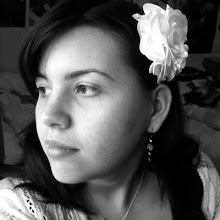This myth from Japan (accessed here: http://www.cs.williams.edu/~lindsey/myths/myths_17.html) was one that I had looked at but was presented by another student during the lecture.
Japanese Creation Myth
Long ago all the elements were mixed together with one germ of life. This germ began to mix things around and around until the heavier part sank and the lighter part rose. A muddy sea that covered the entire earth was created. From this ocean grew a green shoot. It grew and grew until it reached the clouds and there it was transformed into a god. Soon this god grew lonely and it began to create other gods. The last two gods it made, Izanagi anf Izanami, were the most remarkable.One day as they were walking along they looked down on the ocean and wondered what was beneath it. Izanagi thrust his staff into the waters and as he pulled it back up some clumps of mud fell back into the sea. They began to harden and grow until they became the islands of Japan.
The two descended to these islands and began to explore, each going in different directions. They created all kinds of plants. When they met again they decided to marry and have children to inhabit the land.
The first child Izanami bore was a girl of radiant beauty. The gods decided she was too beautiful to live in Japan, so they put her up in the sky and she became the sun. Their second daughter, Tsuki-yami, became the moon and their third and unruly son, Sosano-wo, was sentenced to the sea, where he creates storms.
Later, their first child, Amaterasu, bore a son who became the emperor of Japan and all the emperors since then have claimed descent from him.
From my notes, here is some information on creation myths...
Creation Myths were created by early human cultures to explain unknown phenomenons of the Universe. Despite great distances between civilisations at the time, most myths share similarities:
- They begin with Birth and Reproduction.
- A supreme being is present in nearly all myths.
- Some cultures believe that life began above or below the Earth, in others, humans and animals once lived in harmony but were separated by the sin of humans.
- Innocence may be taken by a God.
- Symbolism is often present through eggs or water (birth)
We also saw 3 Misses by the same animator (1998) which you can watch here: (http://www.youtube.com/watch?v=hVKMLppNSgE) it was a wonderful little parody of a modern tale, a Western story and a Snow White and the Seven Dwarfs fairytale. It's full of quirky humour and funny (if a bit grim) violence. This also showed a fairytale structure (three sections being a big factor, except in this case the story is split up and shown in little parts) and how it can be used in a new new a different way.
Our next task is to find a folk tale that we enjoy to use in activities for future sessions, so we have to make sure it's a good one! :)





No comments:
Post a Comment